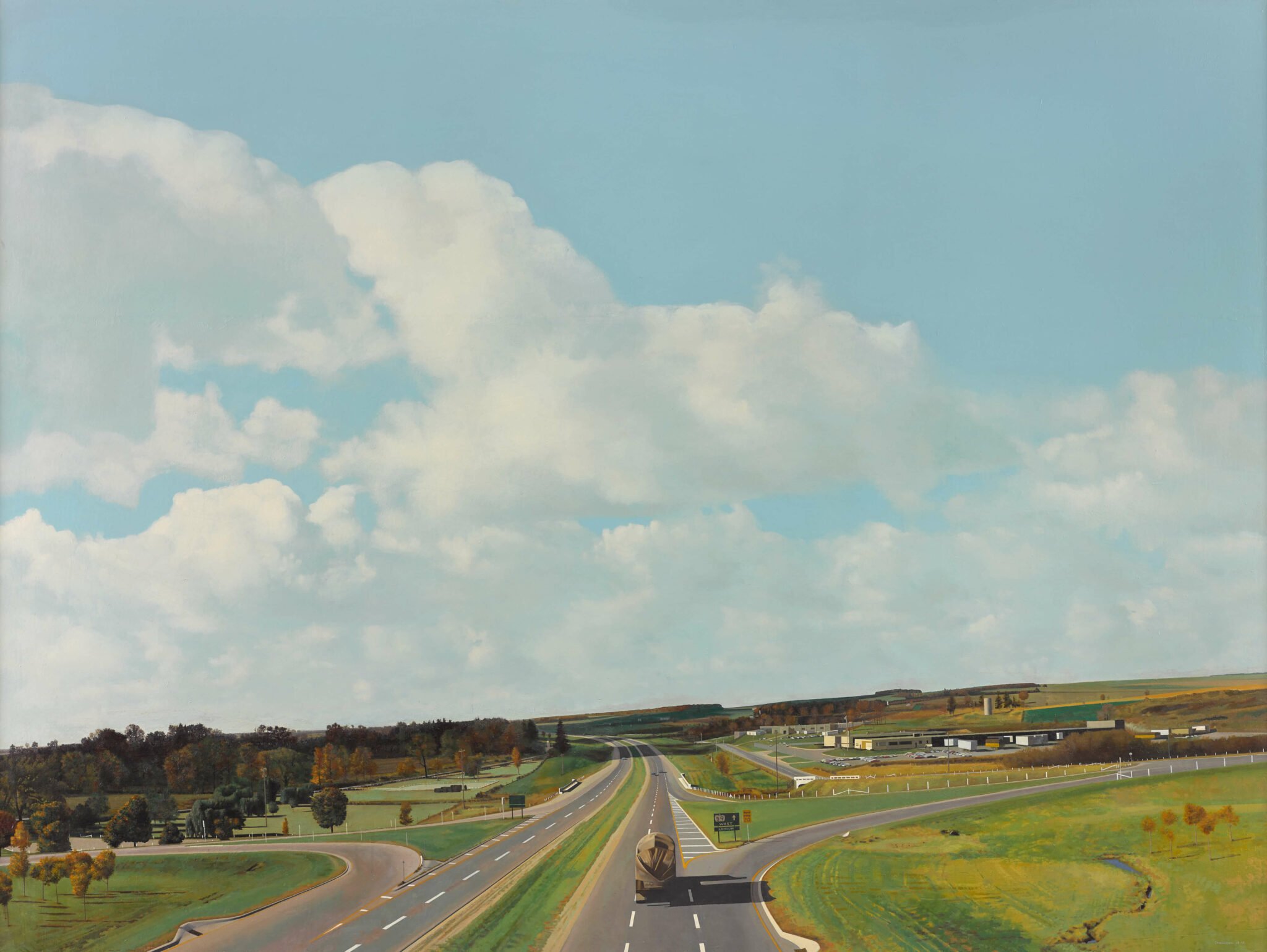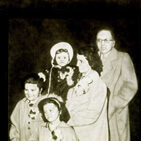401 Towards London No. 1 1968–69

Jack Chambers, 401 Towards London No. 1, 1968–69
Oil on wood, 183 x 244 cm
Art Gallery of Ontario, Toronto
No painting better encapsulates Chambers’s perceptual realism—the term he coined in his 1969 essay of the same name to describe his aspirations and methods. The genesis of the image has become legend: Chambers was driving eastbound on Highway 401 from London. In his rear-view mirror he saw the expansive and perfectly harmonious landscape captured here. It was for him an epiphany, a “wow moment” that inspired him to resume painting after a significant break during which he was dissatisfied with the medium. He later photographed and then transferred the image to the large-scale panel.
Perceptual realism is Chambers’s term for what art should be—that is, a profound reflection on primary sensory experience, not simply a reproduction of it (Chambers largely disdained contemporary American Photorealism). As he states in a 1973 grant application, “Painting is a calculated response to Perception.” As if to show that he was not simply copying what the eye and camera could see, Chambers changed many details during the long inception of this work, not least the signposting on the highway. For him, photography supplied the detailed and stable “description” of perception, but this technology alone was insufficient. “Our experience of photography and its off-shoots will inevitably lucidate all its particular qualities and its spectacular limitations,” he declares in his essay “Perceptual Realism.” Chambers took photographs constantly and made their information integral to his paintings and films, yet he never considered himself a photographer. He maintained a distance from the mechanical precision of the photograph, resulting in a sublime unreality that emanates from this image.

 About the Author
About the Author
 More Online Art Books
More Online Art Books
 Acknowledgements
Acknowledgements